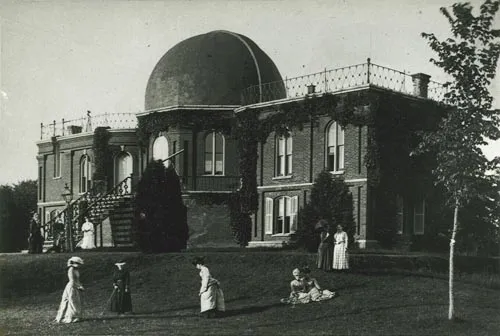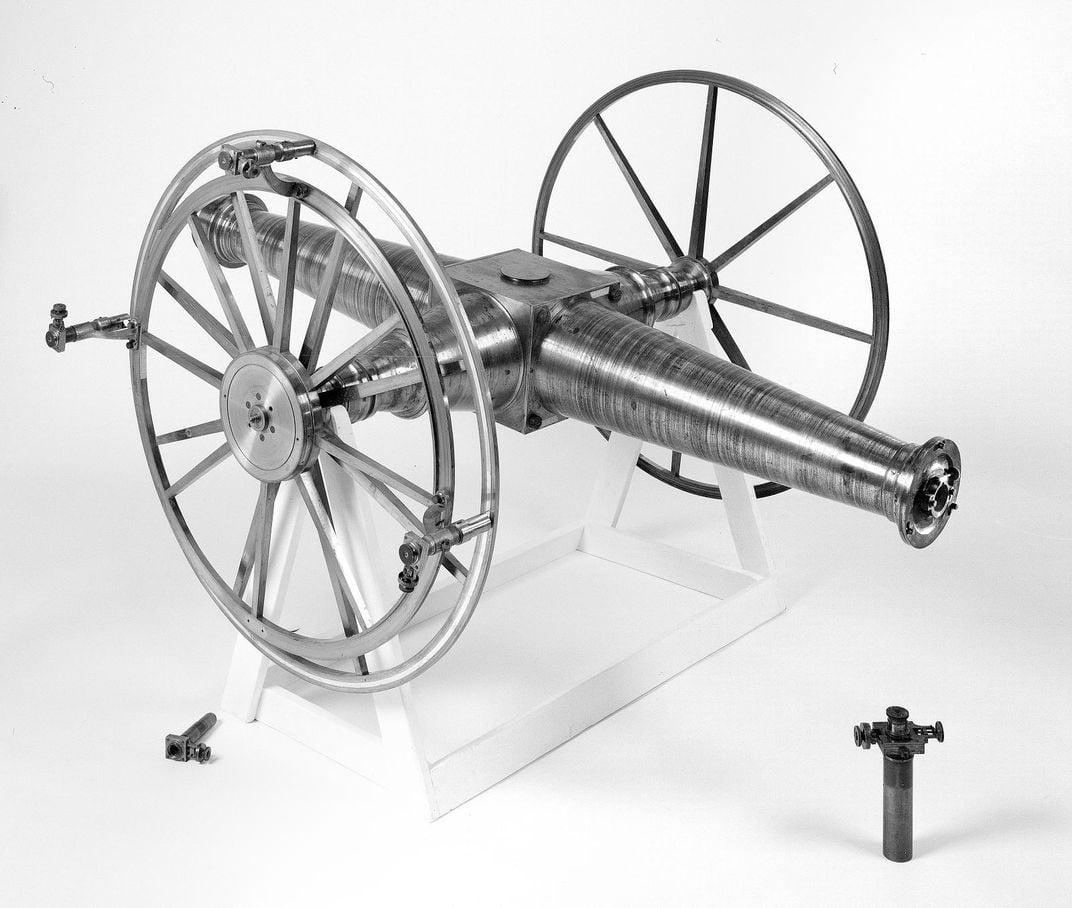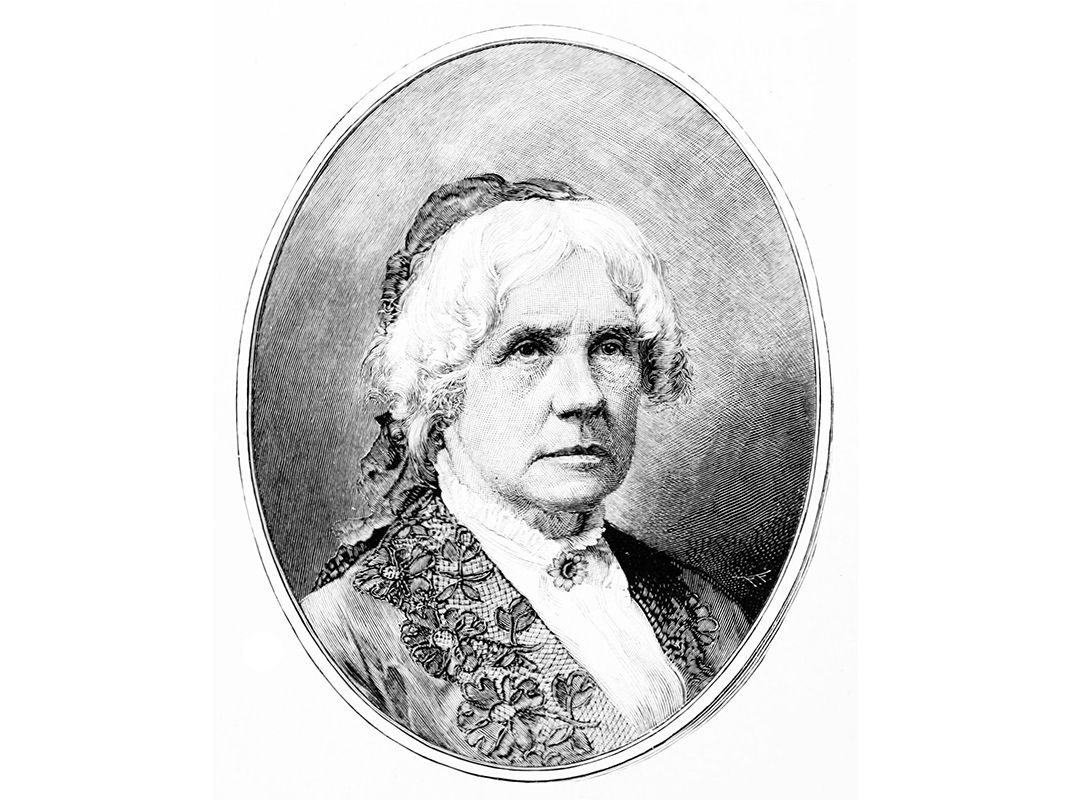When Girls Studied Planets and the Skies Had No Limits
Maria Mitchell, America’s first female astronomer, flourished at a time when both sexes “swept the sky”
/https://tf-cmsv2-smithsonianmag-media.s3.amazonaws.com/filer/28/e3/28e3c544-2439-4ee8-94c8-5a816becac82/maria1.jpg)
In 19th-century America, you might expect that most women were shut out of the sciences—including astronomy. But it wasn’t quite that simple. By many accounts, some educated girls in the early 1800s were actually encouraged to watch the stars and planets, an observation process known as "sweeping the sky." In those days, you might say, astronomy didn’t yet have a gender.
These were the attitudes that nurtured Maria Mitchell (pronounced Ma-rye-a), one of the first professional women astronomers, whose father taught her as a child to "sweep the skies" and chart the stars. In the 19th century, Mitchell won a medal and fought for women's rights—even as the door to science closed in her female students' faces. Her story is a potent reminder that social progress for women has never been steady and linear.
Some historians argue that astronomy at the time was not only open to women, but was in some ways more of a feminine activity than a masculine one. "In the early 19th century America science was really for girls, not for boys. Yet now it’s unimaginable,” says Renée Bergland, an English professor at Simmons College and author of Maria Mitchell and the Sexing of Science. Bergland writes in her book that science was considered "a ladylike avocation" rather than a job.
Deborah Warner, curator in the division of medicine and science at the Museum of American History, agrees that astronomy was easier for girls to enter before the field became professionalized.
"When she was a child there were essentially no jobs for scientists," Warner says. "So if you were a girl or woman, and you were interested in the subject and you had some male relative who was happy to share with you and let you participate, you could do it.” But, Warner adds, that only held if you were already among the educated elite; not all girls had astronomers for fathers.

Mitchell was born on Nantucket in 1818. Her family was Quaker, which meant that they believed both girls and boys should go to school. Her father, a teacher and an astronomer, taught her about the skies when she was very young. In terms of equipment, at-home astronomers weren't at a disadvantage; Harvard's telescope was roughly the same size and power as the Mitchells'. When she was 12, she and her father observed a solar eclipse.
From there, Mitchell’s ascent as an astronomer was swift. In 1847, the prince of Denmark awarded the 29-year-old Mitchell a medal for reporting a comet that was too far away to be seen without a telescope (the comet became known as “Miss Mitchell’s Comet”). The next year, she became the first woman elected into the American Academy of Arts and Sciences. In 1850, it was the American Association for the Advancement of Science.
Mitchell traveled to Italy in 1856, and was barred from the Vatican's observatory; women weren't allowed, because it was also a monastery. She petitioned. "If I had before been mildly desirous of visiting the observatory, I was now intensely anxious to do so," she wrote in her journal.
After two weeks, officials allowed her in, making her the first woman to step inside. She was not overly impressed by the room itself, but "Jupiter was beautiful, and in broad daylight the belts were plainly seen,” she wrote. “With low powers the moon was charming."
Here's another entry from Mitchell's journal around that time: "March 2, 1854. I 'swept' last night two hours, by three periods. It was a grand night—not a breath of air, not a fringe of cloud, all clear, all beautiful. I really enjoy that kind of work, but my back soon becomes tired, long before the cold chills me. I saw two nebulae in Leo with which I was not familiar, and that repaid me for the time."
Mitchell worked as a librarian at the Nantucket Atheneum during the day, and looked toward the stars at night. She "never thought she was doing anything radical at all by doing astronomy. It was widely accepted as a typical feminine activity," says Bergland. "She just happened to be great at it."

She was so great at it that, in 1865, the brand-new Vassar College hired Mitchell as its first astronomy professor and director of its observatory. She took her father with her, and arrived in time for the fall semester. "In the early 19th century," says Bergland, "there were no professional scientists. They're not teaching science in college, so the women like Mitchell who did science did it unprofessionally at the start. So she becomes one of the first professional scientists of either gender, but she's the only woman who is among those early professional astronomers."
Her students studied the skies from their newly built observatory; one student who later went on succeed Mitchell remembered her teacher's favorite planets were Saturn and Jupiter. The telescope that Mitchell used at Vassar is now in the Smithsonian's American History Museum's collection, although it is not currently on display. (The museum does have a photograph of Mitchell and one of her students sitting in front of the telescope on display.)
Starting in the 1870s, opportunities for women astronomers began closing up. “What tightens up is once there start being jobs and people paid, there's less room for women to get in," says Warner. When the doors began closing for science-minded women, Mitchell did not stand idly by. In 1872 she helped found the American Association for the Advancement of Women. She was the president for two years, and served in other capacities until the year before she died, in 1889.
"For women there are, undoubtedly, great difficulties in the path, but so much the more to overcome," Mitchell said in an 1874 lecture. "First, no woman should say, 'I am but a woman!' But a woman! What more can you ask to be? Born a woman—born with the average brain of humanity—born with more than the average heart—if you are mortal, what higher destiny could you have?"
Mitchell even used the rhetoric of the time to argue for more women in the sciences. "The training of a girl fits her for delicate work," Mitchell wrote in 1878. "The touch of her fingers upon the delicate screws of an astronomical instrument might become wonderfully accurate in results; a woman's eyes are trained to nicety of color. The eye that directs a needle in the delicate meshes of embroidery will equally well bisect a star with the spider web of the micrometer."
Mitchell wanted her students to succeed, and earn the attention and acclaim that she had in her career. She was "a role model, big time," says Warner. But times had changed. Science was becoming a profession, which meant women were no longer as welcome. "When she retired," says Bergland, "one of those students from the first year was her first student to get an astronomy job. And that was the student who replaced Mitchell."

An asteroid was named for Mitchell in 1937. A Google Doodle honored her in 2013. Nantucket's science center is the Maria Mitchell Association. Yet today just 26 percent of those who receive astronomy PhDs are women, according to the National Science Foundation; a quarter of astronomy professors in the U.S. are women, according to a national 2010 survey; and analyses show that women astronomers are cited far less frequently than their male counterparts. This entrenched gender imbalance has inspired efforts within the science community to encourage women and girls to become professional scientists.
Given this backslide, Mitchell's legacy has been confusing for historians, says Bergland. "We just don't like stories where things move backwards," she says. "And things got worse for a time than the 1830s. That's not how you expect it to go. I do want to acknowledge that it's a sad story, and sometimes I do that by talking about Venus, which has retrograde motion. That seems kind of appropriate.”
When Mitchell was young, women were seen as scientists. But science wasn't yet a job. “It is really challenging to us still today to think there was a time that it was totally normal for girls to be doing science,” says Bergland. “There was a time when science was completely not gendered as male. It just wasn't."